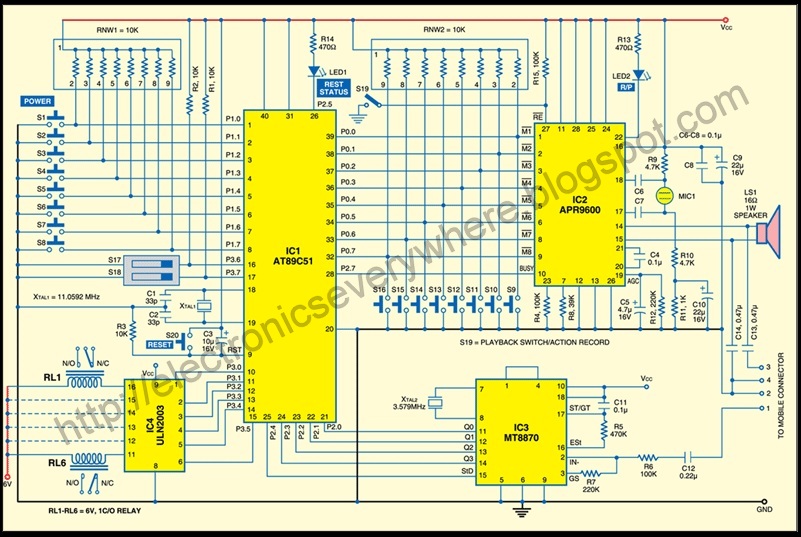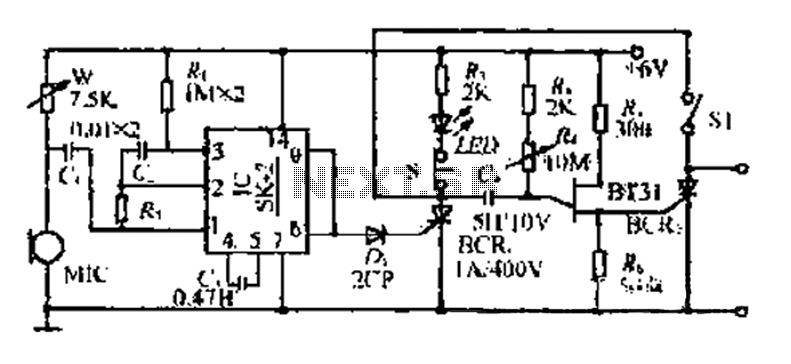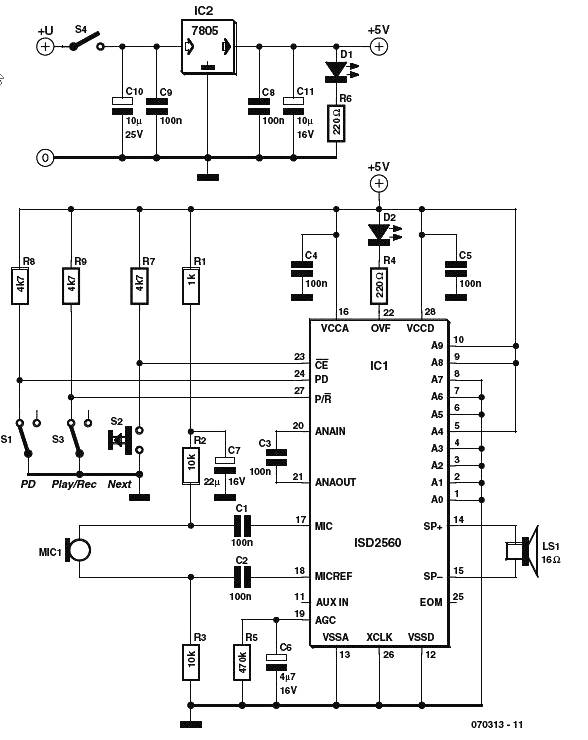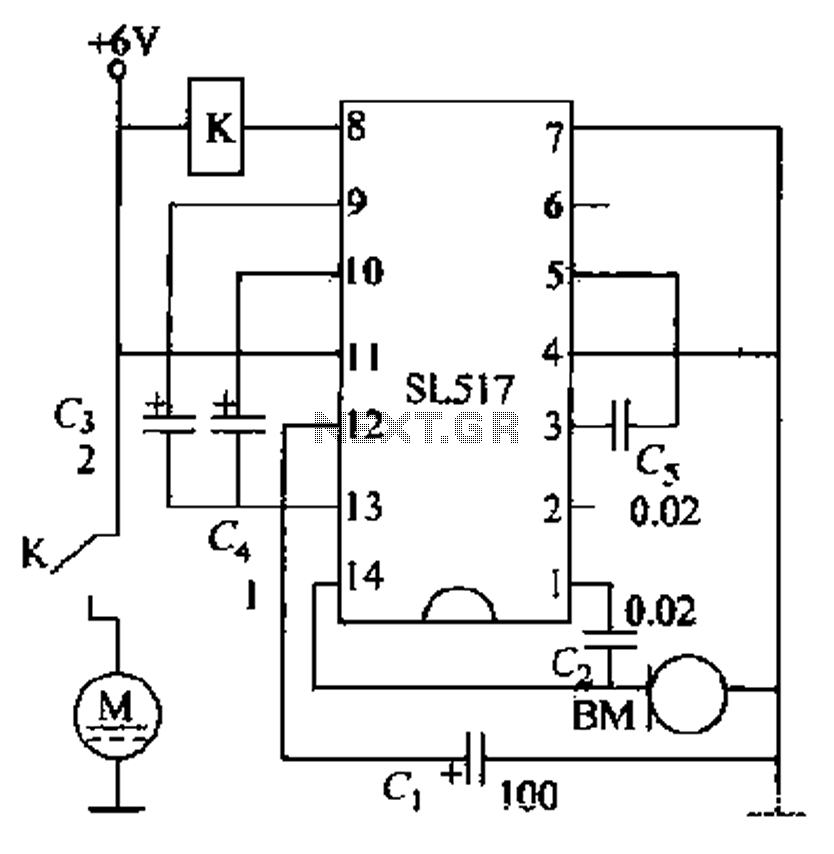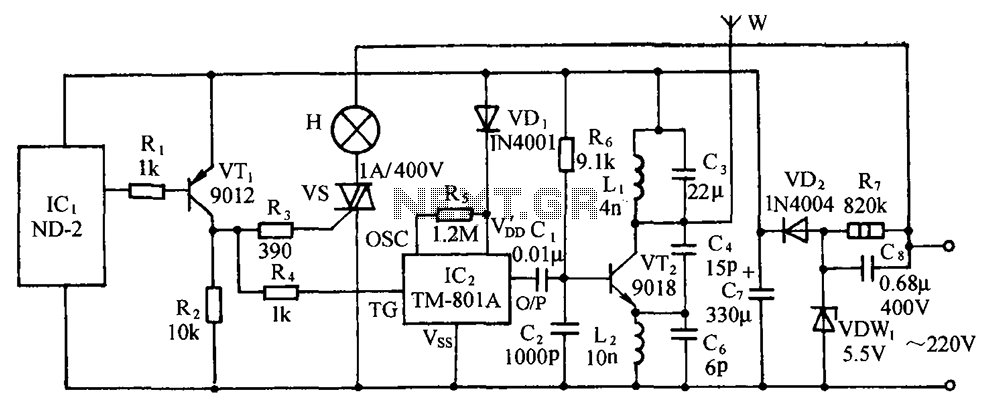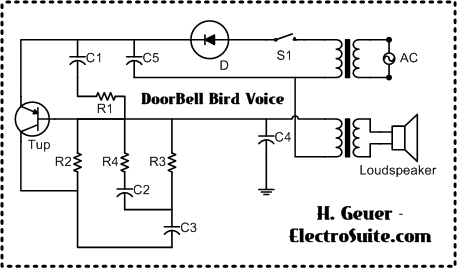
Voice Scrambler/Descrambler
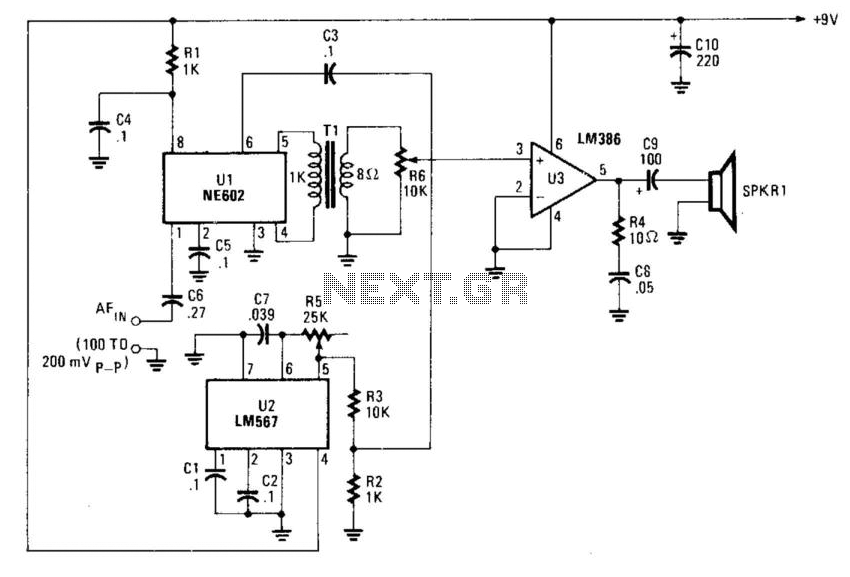
This circuit utilizes an NE602 as an inversion mixer. The operational frequency for U2 is set to approximately 2.5 to 3.5 kHz. U3 is responsible for driving a loudspeaker. Due to the nature of speech inversion scrambling being its own inverse, the circuit is also capable of descrambling.
The circuit employs the NE602 integrated circuit, which serves as a versatile mixer capable of handling various modulation schemes. The primary function of the NE602 in this configuration is to perform inversion mixing, which is a technique used in scrambling and descrambling audio signals, particularly speech.
In this design, U2 is configured to operate within the frequency range of 2.5 to 3.5 kHz, which is suitable for human speech frequencies. This frequency range ensures that the circuit effectively scrambles the audio signal, making it unintelligible to unauthorized listeners. The output from U2 is then fed into U3, which is configured to drive a loudspeaker, enabling the playback of the scrambled or descrambled audio.
The scrambling process works by inverting the audio waveform, meaning that the peaks of the waveform become troughs and vice versa. This inversion effectively obscures the original speech content. However, since the process of inversion is self-reversible, the same circuit can be used to descramble the audio signal, allowing authorized users to recover the original speech.
The design may include additional components such as resistors, capacitors, and possibly a power supply circuit to ensure proper operation of the NE602 and audio output stage. Proper attention should be given to the power supply decoupling to minimize noise and improve the performance of the mixer. Furthermore, the circuit layout should be optimized for minimal interference and signal integrity, particularly in the audio frequency range.
Overall, this circuit provides a practical solution for secure audio communication through speech inversion scrambling, while also offering the capability for easy recovery of the original message. This circuit uses an NE602 as an inversion mixer. U2 is set to run at about 2.5 to 3.5 kHz. U3 drives a loudspe aker. Because speech inversion scrambling is its own inverse, the circuit will also descramble.
The circuit employs the NE602 integrated circuit, which serves as a versatile mixer capable of handling various modulation schemes. The primary function of the NE602 in this configuration is to perform inversion mixing, which is a technique used in scrambling and descrambling audio signals, particularly speech.
In this design, U2 is configured to operate within the frequency range of 2.5 to 3.5 kHz, which is suitable for human speech frequencies. This frequency range ensures that the circuit effectively scrambles the audio signal, making it unintelligible to unauthorized listeners. The output from U2 is then fed into U3, which is configured to drive a loudspeaker, enabling the playback of the scrambled or descrambled audio.
The scrambling process works by inverting the audio waveform, meaning that the peaks of the waveform become troughs and vice versa. This inversion effectively obscures the original speech content. However, since the process of inversion is self-reversible, the same circuit can be used to descramble the audio signal, allowing authorized users to recover the original speech.
The design may include additional components such as resistors, capacitors, and possibly a power supply circuit to ensure proper operation of the NE602 and audio output stage. Proper attention should be given to the power supply decoupling to minimize noise and improve the performance of the mixer. Furthermore, the circuit layout should be optimized for minimal interference and signal integrity, particularly in the audio frequency range.
Overall, this circuit provides a practical solution for secure audio communication through speech inversion scrambling, while also offering the capability for easy recovery of the original message. This circuit uses an NE602 as an inversion mixer. U2 is set to run at about 2.5 to 3.5 kHz. U3 drives a loudspe aker. Because speech inversion scrambling is its own inverse, the circuit will also descramble.
